SAP Service Continuity
Filter By
Browse By
- SAP Analytics and AI
- SAP Application Development and Integration
- All SAP Application Development and Integration
- SAP ABAP
- SAP ABAP Development Tools
- SAP ABAP Test Cockpit
- SAP API Management
- SAP BAPI
- SAP Basis
- SAP BRF
- SAP Business Application Studio
- SAP CMS
- SAP Design Studio
- SAP Development Tools
- SAP DevOps
- SAP EAI
- SAP EDI
- SAP Extension Suite
- SAP Fiori
- SAP Fiori Elements
- SAP Integration Suite
- SAP Low Code Application Development
- SAP Low Code Automation
- SAP Netweaver
- SAP Release Management
- SAP UI5
- SAP Web Application Server
- SAP Web IDE
- SAP Business Process Management
- SAP Center of Excellence
- SAP CIO
- SAP Customer Experience
- SAP Data and Data Management
- All SAP Data and Data Management
- SAP BW
- SAP BW/4HANA
- SAP Crystal Reporting
- SAP Data Archiving
- SAP Data Center
- SAP Data Governance
- SAP Data Integration
- SAP Data Migration
- SAP Data Quality
- SAP Data Services
- SAP Data Strategy
- SAP Data Visualization
- SAP Data Warehouse Cloud
- SAP DMS
- SAP Document Control
- SAP EIM
- SAP ETL
- SAP ETL Tools
- SAP HANA
- SAP HANA Administration
- SAP HANA Deployment Infrastructure
- SAP HANA Studio
- SAP Master Data
- SAP Master Data Governance
- SAP MDM
- SAP Enterprise Architect
- SAP Enterprise Asset Management
- SAP ERP
- SAP Finance
- All SAP Finance
- SAP Accounting
- SAP AR AP
- SAP Asset Accounting
- SAP Billing Systems
- SAP BPC
- SAP BRIM
- SAP Cash Management
- SAP Central Finance
- SAP Controlling
- SAP COPA
- SAP Cost Center Accounting
- SAP e-invoicing
- SAP FICO
- SAP Finance Automation
- SAP Financial Closing Cockpit
- SAP Financial Consolidation
- SAP Financial Planning
- SAP FX Risk
- SAP General Ledger
- SAP Global Tax Management
- SAP Hyperion
- SAP Order to Cash
- SAP Payment Processing
- SAP Profitability Analysis
- SAP Rebate Management
- SAP S/4HANA Finance
- SAP Universal Journal
- SAP Governance Risk and Compliance
- SAP Human Capital Management
- SAP Intelligent Technologies
- SAP Platform and Technology
- All SAP Platform and Technology
- SAP Business Technology Platform
- SAP Cloud Connector
- SAP Cloud Integration Platform
- SAP Cloud Migration
- SAP Cloud Platform
- SAP Cloud Providers
- SAP Cloud Strategy
- SAP Container Platform
- SAP Digital Asset Management
- SAP Digital Integration Hub
- SAP Digital Signature
- SAP HANA Enterprise Cloud
- SAP HEC
- SAP Hyperscalers
- SAP Infrastructure
- SAP Messaging
- SAP Smart Forms
- SAP Quality and Testing
- SAP Security
- SAP Spend Management
- SAP Supply Chain Management
- All SAP Supply Chain Management
- SAP APO
- SAP Asset Management
- SAP Business Network
- SAP Digital Manufacturing Cloud
- SAP Digital Twin
- SAP EWM
- SAP IBP
- SAP Inventory Management
- SAP Label Printing
- SAP Logistics
- SAP Manufacturing
- SAP Manufacturing Automation
- SAP MES
- SAP MII
- SAP MM
- SAP MRO
- SAP MRP
- SAP Order Management
- SAP Plant Maintenance
- SAP PLM
- SAP Production Planning
- SAP S&OP
- SAP SD
- SAP SPM
- SAP Supply Chain Planning
- SAP Track and Trace
- SAP Transportation Management
- SAP System Administration
What Is Service Continuity?
Service continuity is the process of preparing mitigation for significant disruptions to service delivery so that delivery can continue or resume. Service continuity best practices describe how to prepare service systems and resources to ensure that a minimum critical level of service can continue if a significant risk is realized. Part of service continuity is identifying which services cannot be disrupted and which can be disrupted and for what amount of time.
What Is SAP Service Continuity?
SAP service continuity focuses on ensuring that SAP applications, which often run the most critical processes in an organization, continue to function in the event of a disaster or other disruptive event, even if in a degraded mode.
What Is Service Continuity?
Service continuity is the process of preparing mitigation for significant disruptions to service delivery so that delivery can continue or resume. Service continuity best practices describe how to prepare service systems and resources to ensure that a minimum critical level of service can continue if a significant risk is realized. Part of service continuity is identifying which services cannot be disrupted and which can be disrupted and for what amount of time.
What Is SAP Service Continuity?
SAP service continuity focuses on ensuring that SAP applications, which often run the most critical processes in an organization, continue to function in the event of a disaster or other disruptive event, even if in a degraded mode.
SAP Business Continuity Management provides a framework for building operational resilience, along with an effective response capability for natural disaster, power outage, hardware or telecommunication failures, data corruption, cyberattack, or other disruptive events. The framework includes an IT service continuity management (ITSCM) component, which establishes guidelines for the resilience of systems, services, and in-house IT tools. The focus of ITSCM is on the IT organization and cloud delivery that operate SAP mission-critical infrastructure resources.
ITSCM processes serve four major functions:
- Identify the critical IT resources supporting SAP and IT operations
- Analyze the gaps between the recovery requirements and capabilities
- Address the risks and alert management
- Verify that ITSCM plans are available, prioritized, up-to-date, and tested.
By implementing these processes, the analyses bring attention to IT weaknesses and help mitigate associated risks in SAP systems.
Further Resources for SAPinsiders
Ensuring Business Continuity in a Time of Digital Disruption. The article explains that effective regression testing delivers the confidence and security needed to maintain business continuity and deliver innovation. It describes how Basis Technologies’ Testimony solution addresses this testing challenge in SAP landscapes.
How McKesson Ensures Business Continuity While Accelerating Innovation. The article relates how healthcare company McKesson underwent a testing transformation in order to minimize business disruption as it transformed its SAP environment. To accomplish this, McKesson partnered with Tricentis and implemented its enterprise continuous testing platform.
Ask the Experts: Accelerating your SAP S/4HANA deployments while reducing cost and improving continuity. In this webinar, Jim O’Donnell with Red Hat explains how automating deployment of SAP S/4HANA provides significant flexibility while reducing costs and improving business continuity.
Vendors that can help SAP customers with service continuity include: Basis Technologies, Google Cloud, and Red Hat.
553 results
-

 Premium
Premium
New Work Center Centralizes Issue and Support Service Management with SAP
Reading time: 21 mins
ManagerLearn about the tools and functions in the SAP Engagement and Service Delivery Work Center that provide an overview of your IT issues and the services proposed by SAP. See how to link issues and services to efficiently solve them and get the most value out of SAP Support Services. Key Concept SAP Solution Manager,…...…
-

 Premium
Premium
Effortlessly Manage Your Service-Oriented Architecture Landscape with SOA Manager
Reading time: 16 mins
Discover how to create templates for services configuration (profiles). Then see how to apply these templates (bundled in a business scenario) to services to create endpoints together instead of separate endpoint creation for each service. Service-oriented architecture (SOA) Manager, as a configuration tool for ABAP Web Services, offers additional configuration objects to easily carry out…...…
-

 Premium
Premium
Understand the Central Configuration Manager Tool in SAP BusinessObjects 4.0 for Better System Administration
Reading time: 17 mins
The Central Configuration Manager (CCM) is a platform management tool that allows SAP BusinessObjects administrators to maintain and control BusinessObjects platform server components. Learn about the features included within the CCM tool in BusinessObjects 4.0 and see how to use CCM to successfully administer a BusinessObjects 4.0 platform. Key Concept The BI 4.0 server is…...…
-
-

 Premium
Premium
SAP CRM 2006s
Reading time: 22 mins
This technical look at the Web service tool provides some tips for using Web services. By reviewing the structure of the Web service tool, you can also get a look at the new WebClient UI offered in SAP CRM 2006s and SAP CRM 2007. Key Concept Formerly applicable only to Interaction Center, the WebClient User…...…
-

- SAP CS
 Premium
Premium
Effectively Manage Your Customer Service Business Function by Using SAP’s Integrated Service Order Functionality
Reading time: 16 mins
See how service order functionality integrates with the controlling function to record, track, and manage both costs and revenues resulting from service functions for some of the common customer service scenarios. Key Concept Customer service (CS) order functionality helps you capture the desired level of detail pertaining to activities and resources used to carry out…...…
-

 Premium
Premium
SAP CRM 7.0: Use Multilevel Categorization to Determine the Service and Response Profiles of Service Requests
Reading time: 14 mins
Multilevel categorization allows you to determine response times based on categories of issues instead of focusing on abstract priority values. Learn how to extend Service Level Agreement (SLA) determination by multilevel categorization through customization. You can determine the SLA profile based on a category or subcategory of the service request and you can establish response…...…
-

 Premium
Premium
Take Advantage of New Sales and Service Functionality in SAP CRM 7.0
Reading time: 17 mins
Discover how upgrading to SAP CRM 7.0 can provide you with new tools to help your sales and service teams. Additions in this release include the ability to display expired contracts and the ability to create ERP quotes. Key Concept Part of SAP Business Suite 7.0, SAP CRM 7.0, which became generally available in May…...…
-
-

- SAP HANA
 Premium
Premium
SAP Data Services Part 3: How to Extract, Transform, and Load Data into SAP HANA
Reading time: 17 mins
Examine and compare the classic SAP Data Services approach for extracting, transforming, and loading (ETL) processes to the functionality that is native to SAP HANA to determine optimal integration. Key Concept Certain extract, transform, and load (ETL) processes have been pushed to SAP HANA, which directly affects the integration with SAP Data Services. ETL is…...…
-

 Premium
Premium
Resource Planning Application Guides Service Demands Through to Fulfillment
Reading time: 18 mins
See how companies are applying the resource planning application (RPA) in SAP CRM to meet the demands of their service delivery process. Learn about its key components, the information you need to maintain to assist in the Resource Scheduling Process, and the selection of resources in conjunction with Microsoft Outlook (groupware) integration. Key Concept At…...…
-

 Premium
Premium
Two Methods to Procure Third-Party Services in SAP EAM
Reading time: 16 mins
Organizations sometimes seek services from external agencies for maintenance functions. Learn how materials management and plant maintenance functions integrate for handling those external services in Enterprise Asset Management. Key Concept You can generate a single purchase order per breakdown occurrence or preventative maintenance requirement with external services. For periodical services, you can settle each service…...…
Featured Insiders
-

Sherry Yu
Global Alliance Director - SAP Success Architect, SUSE
-

Brenton O’Callaghan
Chief Customer Officer, Avantra
-

Craig L. Brown, Sr.
Chief Transformation Architect, Xceleon, LLC
Become a Member
Unlimited access to thousands of resources for SAP-specific expertise that can only be found here.
Upcoming Events
-

Register Now: SAPinsider Technovation Summit Barcelona: AI + SAP BTP
May 14 - 15, 2024
Barcelona, Spain
View Event
Related Vendors
Your request has been successfully sent

